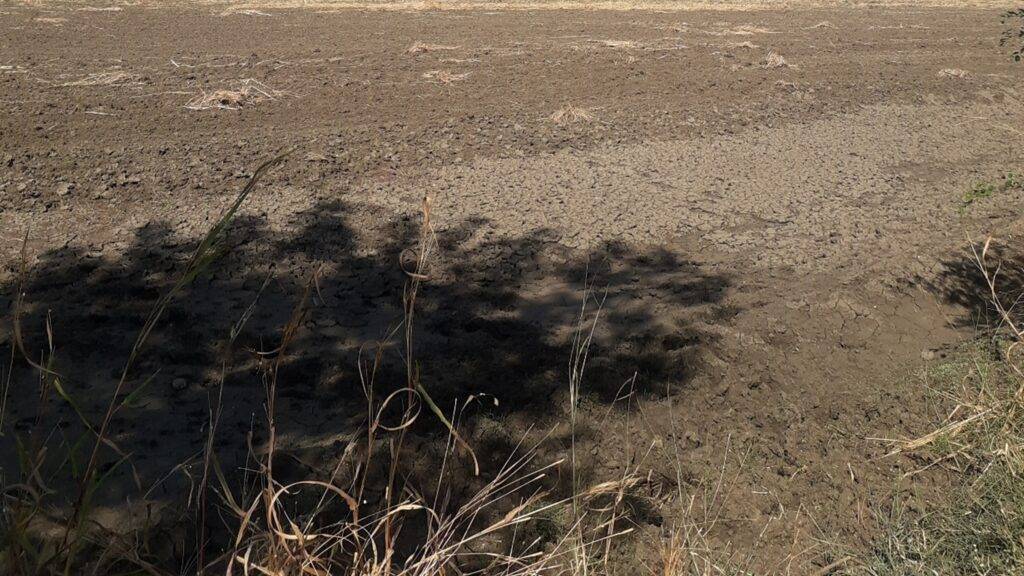
COMPETITIVE EXAM MCQs SERIES of ENVIRONMENTAL SCIENCE for UGC-NET/JRF, SLET, ARS, GATE, and other entrance tests – Environmental Geosciences – Identification & Characterization of Clay Minerals.
Syllabus Outline
- Classification, crystal structure and layering of clay minerals.
- Physical and chemical properties of clay minerals.
- Factors influencing clay mineral properties.
- Significance of clay minerals in environmental processes (e.g. soil formation, nutrient cycling, and pollutant adsorption).
- Clay mineral identification and characterization using advanced analytical techniques (e.g. X-ray diffraction, scanning electron microscopy, Thermal analysis, and Fourier-transform infrared spectroscopy).
- Particle size analysis, surface area and porosity measurements
- Cation exchange capacity determination.
- Environmental applications of clay minerals (e.g. role in pollutant immobilization, nutrient retention, and soil-water interactions.
This quiz contains the concept-based most frequently asked 25 MCQs of “Environmental Geosciences – Identification & Characterization of Clay Minerals “. Each question has a single correct/most appropriate answer.
*****
1. The identification of clay minerals in geological samples can provide information about:
a) Past climate conditions
b) Tectonic plate movements
c) Mineral resource potential
d) Paleomagnetic reversals
2. The high surface area of clay minerals makes them effective sorbents for:
a) Water vapour
b) Atmospheric gases
c) Inorganic salts
d) Organic contaminants
3. Which of the following techniques is used to provide information about the chemical composition and bonding in clay minerals?
a) Differential Thermal Analysis
b) Scanning Electron Microscopy
c) X-ray Diffraction
d) Infrared Spectroscopy
4. Due to its swelling properties, which clay mineral is commonly used as a drilling mud additive in the oil and gas industry?
a) Montmorillonite
b) Chlorite
c) Kaolinite
d) Illite
5. Clay minerals are often used as additives in drilling fluids to:
a) Increase well pressure
b) Decrease viscosity
c) Enhance lubrication
d) Control fluid loss
6. Which type of clay mineral has a 2:1 layer structure with one octahedral sheet sandwiched between two tetrahedral sheets?
a) Montmorillonite
b) Chlorite
c) Illite
d) Kaolinite
7. Which clay mineral is commonly used in the cosmetic industry for its absorbent properties?
a) Chlorite
b) Illite
c) Kaolinite
d) Montmorillonite
8. What is the basic building block of clay minerals composed of?
a) One octahedral layer
b) Two tetrahedral layers and one octahedral layer
c) One tetrahedral layer and two octahedral layers
d) Three tetrahedral layers
9. Clay minerals contribute to the overall stability of soil by:
a) Reducing soil compaction
b) Increasing soil acidity
c) Enhancing soil cohesion
d) Promoting soil erosion
10. What is the primary factor determining the type of clay mineral?
a) Texture
b) Particle size
c) Color
d) Crystal structure
11. Recent advancements in analytical techniques have enabled the precise characterization of clay mineral surfaces at the nanoscale using:
a) Atomic force microscopy
b) Ultraviolet-visible spectroscopy
c) Nuclear magnetic resonance spectroscopy
d) Electron paramagnetic resonance spectroscopy
12. Which of the following elements are commonly found in the composition of clay minerals?
a) Carbon and hydrogen
b) Sodium and potassium
c) Aluminum and silicon
d) Iron and zinc
13. What is the chemical composition of clay minerals primarily composed of?
a) Carbon, hydrogen, and oxygen
b) Calcium, sodium, and sulfur
c) Silica, alumina, and water
d) Iron, magnesium, and potassium
14. The presence of which element gives clay minerals their characteristic plasticity?
a) Oxygen
b) Silicon
c) Iron
d) Aluminum
15. Which type of clay mineral is known for its high cation exchange capacity?
a) Illite
b) Kaolinite
c) Chlorite
d) Smectite
16. Which type of clay mineral is commonly associated with hardpan layer formation in soil, limiting root growth and water infiltration?
a) Illite
b) Montmorillonite
c) Kaolinite
d) Chlorite
17. In clay minerals, tetrahedral and octahedral sheets are arranged in a:
a) Cubic lattice
b) Trigonal lattice
c) Amorphous structure
d) Hexagonal lattice
18. Which clay mineral is known for its high plasticity and is commonly used in ceramic production?
a) Chlorite
b) Kaolinite
c) Montmorillonite
d) Illite
19. The presence of interlayer cations in clay minerals affects:
a) Thermal stability
b) Ion exchange capacity
c) Color
d) Plasticity
20. Which analytical technique is commonly used for clay mineral identification and quantification?
a) X-ray diffraction
b) Infrared spectroscopy
c) Scanning electron microscopy
d) X-ray fluorescence
21. How are the tetrahedral and octahedral layers held together in clay minerals?
a) Covalent bonds
b) Hydrogen bonds
c) Ionic bonds
d) Weak electrostatic forces
22. Which of the following techniques is commonly used to investigate the surface charge properties of clay minerals?
a) Zeta potential analysis
b) Fourier-transform infrared spectroscopy
c) Gas chromatography-mass spectrometry
d) X-ray diffraction
23. Which type of clay mineral has a 1:1 layer structure with one tetrahedral sheet bonded to one octahedral sheet?
a) Chlorite
b) Illite
c) Montmorillonite
d) Kaolinite
24. Clay minerals can transform other minerals through processes such as:
a) Weathering
b) Precipitation
c) Metamorphism
d) Crystallization
25. What is the unique structure of clay minerals that allows cation exchange?
a) Fibrous structure
b) Layered structure
c) Cubic structure
d) Amorphous structure
*****
Previous: Weathering
Next: Earth’s Thermal Environment and Seasons
References
- Velde, Bruce (2013) Origin and Mineralogy of Clays: Clays and the Environment, Springer, 1st edition.
- Hillier, Stephen, and Velde, Bruce (2003) Clay Mineralogy, Wiley-Blackwell, 2nd edition.
- Sivasubramanian, P. (2017) Clay Minerals: Formation, Characterization and Relevance in Environmental Issues, Springer, 1st edition.

